
Multimedia Systems
Multimedia Hardware
Most of the computers now-a-days come equipped with the hardware components required to develop/view multimedia applications. Following are the various categories in which we can define the various types of hardwares required for multimedia applications.
Processor
The heart of any multimedia computer is its processor. Today Core 15 or higher processor is recommended for a multimedia computer.
CPU is considered as the brain of the computer.
CPU performs all types of data processing operations.
It stores data, intermediate result and instructions (program).
It controls the operations of all parts of computer.

Memory and Storage Devices
You need memory for storing various files used during production, original audio and video clips, edited pieces and final mined pieces. You also need memory for backup of your project files.
Primary Memory
Primary memory holds only those data and instructions on which computer is currently working. It has limited capacity and data gets lost when power is switched off. It is generally made up of semiconductor device. These memories are not as fast as registers. The data and instructions required to be processed earlier reside in main memory. It is divided into two subcategories RAM and ROM.

Flash Memory
Cache memory is a very high speed semiconductor memory, which can speed up CPU. It acts as a buffer between the CPU and main memory. It is used to hold those parts of data and program which are most frequently used by CPU. The parts of data and programs are transferred from disk to cache memory by operating system, from where CPU can access them.
Secondary Memory
This type of memory is also known as external memory or non-volatile. It is slower than main memory. These are used for storing Data/Information permanently. CPU directly does not access these memories; instead they are accessed via input-output routines. Contents of secondary memories are first transferred to main memory and then CPU can access it. For example, disk, CD-ROM, DVD, etc.
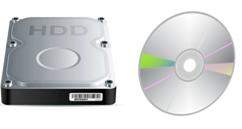
Input Devices
Following are the various types of input devices which are used in multimedia systems.
Keyboard
Most common and very popular input device is keyboard. The keyboard helps in inputting the data to the computer. The layout of the keyboard is like that of traditional typewriter, although there are some additional keys provided for performing some additional functions. Keyboards are of two sizes 84 keys or 101/102 keys, but now 104 keys or 108 keys keyboard is also available for Windows and Internet. The keys are following −
| Sr. No. | Keys | Description |
|---|---|---|
| 1 | Typing Keys | These keys include the letter keys (A-Z) and digits keys (0-9) which generally give same layout as that of typewriters. |
| 2 | Numeric Keypad | It is used to enter numeric data or cursor movement. Generally, it consists of a set of 17 keys that are laid out in the same configuration used by most adding machine and calculators. |
| 3 | Function Keys | The twelve functions keys are present on the keyboard. These are arranged in a row along the top of the keyboard. Each function key has unique meaning and is used for some specific purpose. |
| 4 | Control keys | These keys provide cursor and screen control. It includes four directional arrow key. Control keys also include Home, End, Insert, Delete, Page Up, Page Down, Control(Ctrl), Alternate(Alt), Escape(Esc). |
| 5 | Special Purpose Keys | Keyboard also contains some special purpose keys such as Enter, Shift, Caps Lock, Num Lock, Space bar, Tab, and Print Screen. |

Mouse
Mouse is most popular Pointing device. It is a very famous cursor-control device. It is a small palm size box with a round ball at its base which senses the movement of mouse and sends corresponding signals to CPU on pressing the buttons. Generally, it has two buttons called left and right button and scroll bar is present at the mid. Mouse can be used to control the position of cursor on screen, but it cannot be used to enter text into the computer.

Joystick
Joystick is also a pointing device, which is used to move cursor position on a monitor screen. It is a stick having a spherical ball at its both lower and upper ends. The lower spherical ball moves in a socket. The joystick can be moved in all four directions. The function of joystick is similar to that of a mouse. It is mainly used in Computer Aided Designing (CAD) and playing computer games.

Light Pen
Light pen is a pointing device, which is similar to a pen. It is used to select a displayed menu item or draw pictures on the monitor screen. It consists of a photocell and an optical system placed in a small tube. When light pen's tip is moved over the monitor screen and pen button is pressed, its photocell sensing element detects the screen location and sends the corresponding signal to the CPU.
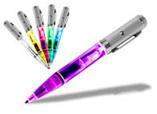
Track Ball
Track ball is an input device that is mostly used in notebook or laptop computer, instead of a mouse. This is a ball, which is half inserted and by moving fingers on ball, pointer can be moved.Since the whole device is not moved, a track ball requires less space than a mouse. A track ball comes in various shapes like a ball, a button and a square.
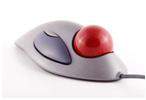
Scanner
Scanner is an input device, which works more like a photocopy machine. It is used when some information is available on a paper and it is to be transferred to the hard disc of the computer for further manipulation. Scanner captures images from the source which are then converted into the digital form that can be stored on the disc. These images can be edited before they are printed.

Digitizer
Digitizer is an input device, which converts analog information into a digital form. Digitizer can convert a signal from the television camera into a series of numbers that could be stored in a computer. They can be used by the computer to create a picture of whatever the camera had been pointed at. Digitizer is also known as Tablet or Graphics Tablet because it converts graphics and pictorial data into binary inputs. A graphic tablet as digitizer is used for doing fine works of drawing and images manipulation applications.
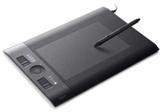
Magnetic Ink Card Reader (MICR)
MICR input device is generally used in banks because of a large number of cheques to be processed everyday. The bank's code number and cheque number are printed on the cheques with a special type of ink that contains particles of magnetic material that are machine readable. This reading process is called Magnetic Ink Character Recognition (MICR). The main advantage of MICR is that it is fast and less error prone.
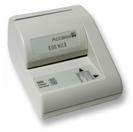
Optical Character Reader (OCR)
OCR is an input device used to read a printed text. OCR scans text optically character by character, converts them into a machine readable code and stores the text on the system memory.
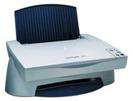
Bar Code Readers
Bar Code Reader is a device used for reading bar coded data (data in form of light and dark lines). Bar coded data is generally used in labelling goods, numbering the books, etc. It may be a hand-held scanner or may be embedded in a stationary scanner.Bar Code Reader scans a bar code image, converts it into an alphanumeric value, which is then fed to the computer to which bar code reader is connected.
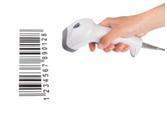
Optical Mark Reader (OMR)
OMR is a special type of optical scanner used to recognize the type of mark made by pen or pencil. It is used where one out of a few alternatives is to be selected and marked. It is specially used for checking the answer sheets of examinations having multiple choice questions.
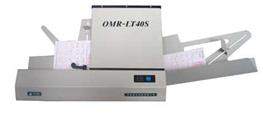
Voice Systems
Following are the various types of input devices which are used in multimedia systems.
Microphone
Microphone is an input device to input sound that is then stored in digital form. The microphone is used for various applications like adding sound to a multimedia presentation or for mixing music.

Speaker
Speaker is an output device to produce sound which is stored in digital form. The speaker is used for various applications like adding sound to a multimedia presentation or for movies displays etc.

Digital Camera
Digital camera is an input device to input images that is then stored in digital form. The digital camera is used for various applications like adding images to a multimedia presentation or for personal purposes.
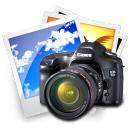
Digital Video Camera
Digital Video camera is an input device to input images/video that is then stored in digital form. The digital video camera is used for various applications like adding videos to a multimedia presentation or for personal purposes.
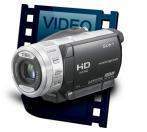
Output Devices
Following are few of the important output devices, which are used in Computer Systems −
Monitors
Monitor commonly called as Visual Display Unit (VDU) is the main output device of a computer. It forms images from tiny dots, called pixels, that are arranged in a rectangular form. The sharpness of the image depends upon the number of the pixels. There are two kinds of viewing screen used for monitors −
Cathode-Ray Tube (CRT) Monitor
In the CRT, display is made up of small picture elements called pixels for short. The smaller the pixels, the better the image clarity or resolution. It takes more than one illuminated pixel to form whole character, such as the letter 'e' in the word help. A finite number of characters can be displayed on a screen at once. The screen can be divided into a series of character boxes - fixed location on the screen where a standard character can be placed. Most screens are capable of displaying 80 characters of data horizontally and 25 lines vertically.

Flat-Panel Display Monitor
The flat-panel display refers to a class of video devices that have reduced volume, weight and power requirement compared to the CRT. You can hang them on walls or wear them on your wrists. Current uses for flat-panel displays include calculators, video games, monitors, laptop computer, graphics display. The flat-panel displays are divided into two categories
Emissive Displays
The emissive displays are devices that convert electrical energy into light. Examples are plasma panel and LED (Light-Emitting Diodes).
Non-Emissive Displays
The Non-emissive displays use optical effects to convert sunlight or light from some other source into graphics patterns. Example is LCD (Liquid-Crystal Device)

Printers
Printer is the most important output device, which is used to print information on paper.
Dot Matrix Printer
In the market, one of the most popular printers is Dot Matrix Printer because of their ease of printing features and economical price. Each character printed is in form of pattern of Dot's and head consists of a Matrix of Pins of size (5*7, 7*9, 9*7 or 9*9) which comes out to form a character that is why it is called Dot Matrix Printer.
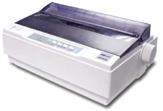
Daisy Wheel
Head is lying on a wheel and Pins corresponding to characters are like petals of Daisy (flower name) that is why it is called Daisy Wheel Printer. These printers are generally used for word-processing in offices which require a few letters to be send here and there with very nice quality representation.
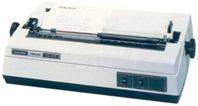
Line Printers
Line printers are printers, which print one line at a time.
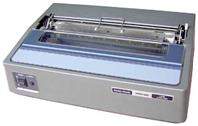
Laser Printers
These are non-impact page printers. They use laser lights to produce the dots needed to form the characters to be printed on a page.
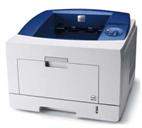
Inkjet Printers
Inkjet printers are non-impact character printers based on a relatively new technology. They print characters by spraying small drops of ink onto paper. Inkjet printers produce high quality output with presentable features. They make less noise because no hammering is done and these have many styles of printing modes available. Colour printing is also possible. Some models of Inkjet printers can produce multiple copies of printing also.
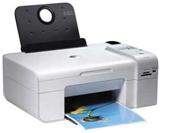
Screen Image Projector
Screen image projector or simply projector is an output device used to project information from a computer on a large screen so that a group of people can see it simultaneously. A presenter first makes a PowerPoint presentation on the computer. Now a screen image projector is plugged to a computer system and presenter can make a presentation to a group of people by projecting the information on a large screen. Projector makes the presentation more understandable.

Speakers and Sound Card
Computers need both a sound card and speakers to hear audio, such as music, speech and sound effects. Most motherboards provide an on-board sound card. This built-in-sound card is fine for the most purposes. The basic functions of a sound card are that it converts digital sound signals to analog for speakers making it louder or softer.
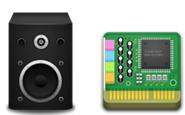
Multimedia Software
Multimedia software tells the hardware what to do. For example, multimedia software tells the hardware to display the color blue, play the sound of cymbals crashing etc. To produce these media elements( movies, sound, text, animation, graphics etc.) there are various software available in the market such as Paint Brush, Photo Finish, Animator, Photo Shop, 3D Studio, Corel Draw, Sound Blaster, IMAGINET, Apple Hyper Card, Photo Magic, Picture Publisher.
Multimedia Software Categories
Following are the various categories of Multimedia software
Device Driver Software - These softwares are used to install and configure the multimedia peripherals.
Media Players - Media players are applications that can play one or more kind of multimedia file format.
Media Conversion Tools - These tools are used for encoding / decoding multimedia contexts and for converting one file format to another.
Multimedia Editing Tools - These tools are used for creating and editing digital multimedia data.
Multimedia Authoring Tools - These tools are used for combing different kinds of media formats and deliver them as multimedia contents.
Multimedia Application
Multimedia applications are created with the help of following mentioned tools and packages.
The sound, text, graphics, animation and video are the integral part of multimedia software. To produce and edit these media elements, there are various software tools available in the market. The categories of basic software tools are:
Text Editing Tools
These tools are used to create letters, resumes, invoices, purchase orders, user manual for a project and other documents. MS-Word is a good example of text tool. It has following features −
Creating new file, opening existing file, saving file and printing it.
Insert symbol, formula and equation in the file.
Correct spelling mistakes and grammatical errors.
Align text within margins.
Insert page numbers on the top or bottom of the page.
Mail-merge the document and making letters and envolpes.
Making tables with variable number of columns and rows.
Painting and Drawing Tools
These tools generally come with a graphical user interface with pull down menus for quick selection. You can create almost all kinds of possible shapes and resize them using these tools. Drawing file can be imported or exported in many image formats like .gif, .tif, .jpg, .bmp, etc. Some examples of drawing software are Corel Draw, Freehand, Designer, Photoshop, Fireworks, Point etc.These software have following features −
Tools to draw a straight line, rectangular area, circle etc.
Different colour selection option.
Pencil tool to draw a shape freehand.
Eraser tool to erase part of the image.
Zooming for magnified pixel editing.
Image Editing Tools
Image editing tools are used to edit or reshape the existing images and pictures. These tools can be used to create an image from scratch as well as images from scanners, digital cameras, clipart files or original artwork files created with painting and drawing tools. Examples of Image editing or processing software are Adobe Photoshop and Paint Shop Pro.
Sound Editing Tools
These tools are used to integrate sound into multimedia project very easily. You can cut, copy, paste and edit segments of a sound file by using these tools. The presence of sound greatly enhances the effect of a mostly graphic presentation, especially in a video. Examples of sound editing software tools are: Cool Edit Pro, Sound Forge and Pro Tools. These software have following features −
Record your own music, voice or any other audio.
Record sound from CD, DVD, Radio or any other sound player.
You can edit, mix the sound with any other audio.
Apply special effects such as fade, equalizer, echo, reverse and more.
Video Editing Tools
These tools are used to edit, cut, copy, and paste your video and audio files. Video editing used to require expensive, specialized equipment and a great deal of knowledge. The aritistic process of video editing consists of deciding what elements to retain, delete or combine from various sources so that they come together in an organized, logical and visually planning manner. Today computers are powerful enough to handle this job, disk space is cheap and storing and distributing your finished work on DVD is very easy. Examples of video editing software are Adobe Premiere and Adobe After Effects.
Animation and Modeling Tools
An animation is to show the still images at a certain rate to give it visual effect with the help of Animation and modeling tools. These tools have features like multiple windows that allow you to view your model in each dimension, ability to drag and drop primitive shapes into a scene, color and texture mapping, ability to add realistic effects such as transparency, shadowing and fog etc. Examples of Animations and modeling tools are 3D studio max and Maya.